What Are The Mounting Options For Starlink Satellite Dishes?
Posted by Howie Scarboro - CEO Fall Protection Distributors, LLC on Feb 28th 2024
In the contemporary digital landscape, where seamless connectivity is indispensable for myriad personal and professional endeavors, innovative breakthroughs such as Starlink have revolutionized internet accessibility. Starlink, spearheaded by SpaceX, promises unparalleled high-speed internet coverage across the globe. Yet, to fully capitalize on the transformative capabilities of Starlink's satellite internet service, selecting the optimal mounting solution is paramount. Whether navigating residential or commercial landscapes, the efficacy of Starlink's connectivity hinges on adeptly chosen and meticulously installed mounting options, ensuring unfettered access to high-speed internet virtually anywhere on Earth. Starlink’s various roof and ground mounting options will be discussed.

Understanding Starlink: Bridging the Digital Divide
In the ever-evolving realm of global connectivity, Starlink, an ambitious project pioneered by SpaceX, has emerged as a beacon of innovation. With a mission to redefine internet accessibility on a global scale, Starlink aims to provide seamless satellite internet coverage to even the most remote and underserved regions of the world. This groundbreaking endeavor traces its roots back to the visionary aspirations of Elon Musk, CEO of SpaceX, who recognized the pressing need to bridge the digital divide and empower communities worldwide through ubiquitous connectivity.
A Glimpse into the History of Starlink
The genesis of the Starlink project can be traced back to early 2015 when SpaceX first unveiled its ambitious plans to deploy a constellation of low Earth orbit (LEO) satellites. These satellites, operating at altitudes significantly lower than traditional geostationary satellites, promised to revolutionize internet accessibility by reducing latency and expanding coverage to remote areas previously devoid of reliable connectivity.
Over the years, SpaceX has steadily progressed towards realizing its vision of a global satellite internet network. The company embarked on an ambitious launch campaign, deploying thousands of advanced satellites into orbit aboard Falcon 9 rockets. Each satellite, equipped with cutting-edge technology and interconnected via sophisticated communication networks, contributes to the overarching goal of providing high-speed internet access to users worldwide.
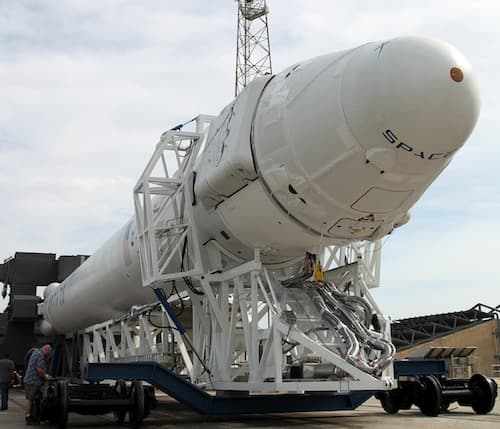
The Evolution of Starlink Satellite Dishes
Central to the Starlink ecosystem are the revolutionary satellite dishes, meticulously designed to receive and transmit data with unprecedented efficiency and reliability. These satellite dishes, often referred to as Starlink terminals or user terminals, represent the interface between end-users and the vast network of orbiting satellites.
The evolution of Starlink satellite dishes has been characterized by continuous innovation and refinement, aimed at enhancing performance, ease of installation, and overall user experience. From early prototypes to the latest iterations, SpaceX has iteratively improved upon the design and functionality of these dishes, incorporating feedback from beta testers and real-world deployment scenarios.
Today, Starlink offers a range of satellite dish options tailored to diverse installation environments and user requirements. Whether mounted on rooftops, poles, or other structures, these satellite dishes leverage advanced technology to establish high-speed, low-latency internet connections, empowering users with unprecedented access to digital resources and opportunities.
Unlocking the Potential of Starlink
As Starlink continues to expand its constellation of satellites and refine its infrastructure, the promise of ubiquitous internet connectivity draws closer to fruition. The transformative impact of Starlink extends far beyond mere internet access, offering a gateway to education, healthcare, economic development, and connectivity in the most remote corners of the globe. By bridging the digital divide and democratizing access to information, Starlink heralds a new era of connectivity, empowerment, and opportunity for communities worldwide.
Importance of Mounting Options
While the Starlink system itself promises exceptional performance, the mounting method plays a crucial role in optimizing connectivity. The right mounting option ensures proper alignment, stability, and accessibility, ultimately enhancing the reliability and efficiency of the internet connection.
Types of Starlink Mounting Options
Starlink offers various mounting options to accommodate diverse installation scenarios, including ground mounts, roof mounts, and pole mounts. Each option comes with its unique advantages and considerations, allowing users to tailor their setup according to their specific needs and preferences.
Ground Mounts: Stability and Accessibility
Ground mounts provide a sturdy and easily accessible solution for installing Starlink terminals. By securing the terminal to the ground using a mounting tripod or other support structures, users can achieve optimal stability and positioning. Ground mounts are particularly suitable for areas with ample outdoor space and clear line-of-sight to the sky.
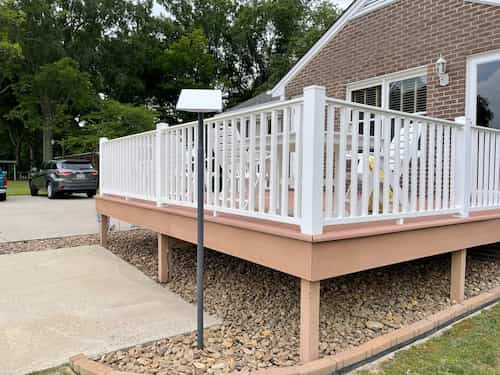
Roof Mounts: Elevating The Starlink Experience
Roof mount options offer a convenient and space-saving solution, minimizing the need for additional hardware or modifications. With proper installation, roof mounts can maximize signal reception and minimize interference, delivering consistent performance.
There are two primary groups of roofs that we will be discussing in the roof mount section. The first will be standing seam roofs, and the other group is everything else besides standing seam roofs.
One notable solution for standing seam roofs is the RoofClamp SataMount, a universal fit system designed for unmatched strength and durability.
RoofClamp SataMount for Standing Seam Roofs
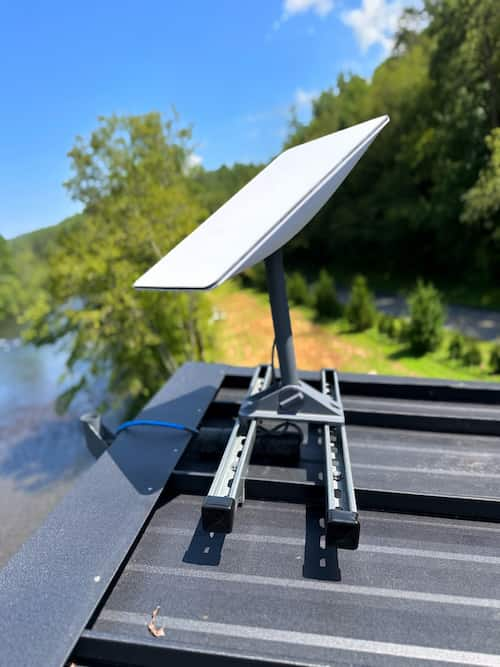
The RoofClamp SataMount is engineered to securely mount satellite dishes on standing seam roofs with exceptional reliability and zero penetrations. This system is not only compatible with Starlink, but also versatile enough to accommodate electrical junction boxes, solar micro inverters, conduits, and various other fixtures necessary for diverse applications.
Features and Benefits
Universal Fit:
The SataMount boasts a universal fit design, with four RCT clamps crafted to fit approximately 95% of modern standing seam roofs. This broad compatibility makes it an attractive option for homeowners, contractors, and satellite businesses alike, eliminating the need for multiple product variations.
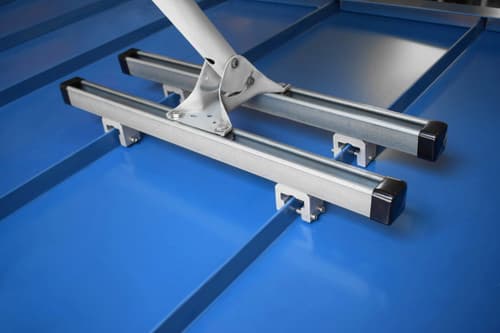
Exceptional Durability:
Constructed to withstand the harshest weather conditions, the SataMount ensures a long-lasting and reliable mounting solution. Each component, including the proprietary 27" Defender-coated P1000T Unistrut, is engineered for maximum durability, guaranteeing superior performance over time.
Easy Installation:
With its flexible design and precision manufacturing, the SataMount facilitates a seamless and straightforward installation process. Its intuitive assembly reduces the need for extensive modifications, saving time and effort during setup. A micro torque wrench should be used when installing RCT clamps.
High Load Capacity:
The SataMount's robust construction allows it to support significant loads, with each 27" Unistrut capable of handling up to 1,690 pounds of loading per strut. This exceptional load capacity ensures stability and security, even in demanding environments.
Included Parts List
- (2) 27” P1000T DF Unistrut with Defender finish
- (4) ¼-20 Defender Series Channel Nuts
- (4) ¼-20x1.5” 304 Stainless Steel Bolts
- (4) ¼” 304 Stainless Steel Flat Washers
- (4) Black Vinyl End Caps
- (4) RCT RoofClamps with Stainless Set Screws and Top Bolt/Washer
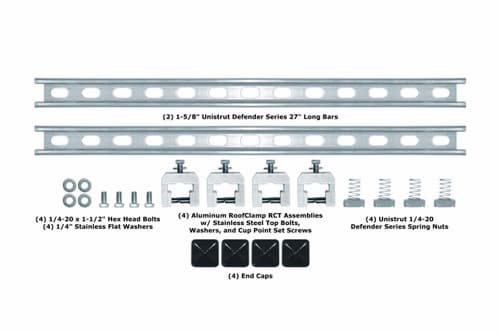
Installation Considerations
For standing seam roofs, the SataMount offers a reliable solution that ensures a secure fit without compromising the integrity of the roof structure. Its versatile design and comprehensive hardware kit make it suitable for various installation scenarios, providing peace of mind to users seeking a robust and long-lasting mounting solution.
In addition to its compatibility with Starlink, the SataMount's ability to accommodate other fixtures further enhances its versatility and value proposition. Whether for residential or commercial applications, this innovative mounting system offers unmatched strength and durability, making it a preferred choice among discerning customers.
Exposed Fastener Roof Options
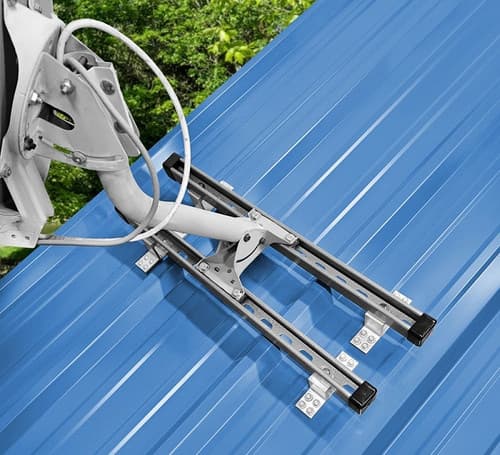
Now that we have covered the standing seam roofs out there, let’s discuss everything else. There are dozens of types of roofs out there besides standing seam. Let’s focus on those that have flat surfaces at least 1.5” wide which will be about 95% of the roofs out there. For these roofs, the SataMount MRM creates the strong and weathertight mounting solution for Starlink satellite dishes on exposed fastener roof systems. The SataMount MRM stands out as the epitome of strength and durability, specifically designed for screw-down metal roofs. This universal-fit bracket redefines reliability, offering unmatched performance for attaching satellite dishes, conduits, solar microinverters, electrical junction boxes, and more.
The SataMount MRM is engineered to provide a comprehensive solution for secure and versatile installations on most roof types including screw-down style metal roofs. Designed to accommodate various satellite receivers, including Starlink V1, V2, and similar-sized dishes, it meets the demands of homeowners, building owners, contractors, and satellite businesses alike.
Features and Benefits
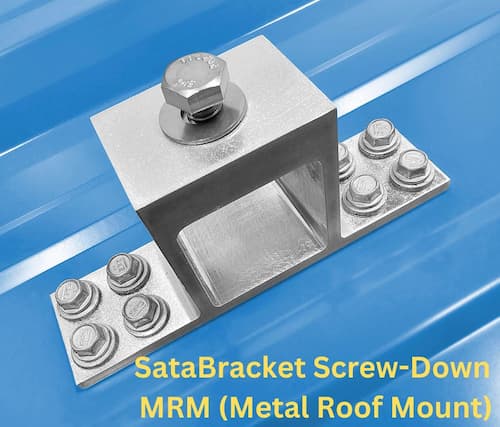
Universal Fit Design:
The SataMount MRM features a universal-fit bracket, the SataBracket, which seamlessly fits most roofs with a minimum of 1.5 inches of flat area. This ingenious design allows for easy mechanical installation without the need for extensive modifications, ensuring a secure fit that prevents roof leaks, as recommended by leading panel manufacturers.
Versatile Compatibility:
While primarily intended for screw-down metal roofs, the SataMount MRM can also be employed with proper preparation on shingle roofs, offering a versatile solution for a variety of roofing types
Exceptional Durability:
Fabricated from Defender-coated P1000T 27" Unistrut rails, each capable of supporting an impressive 1,690 pounds per strut, the SataMount MRM ensures steadfast performance even in the harshest weather conditions. The robust foundation provided by the Unistrut rails guarantees long-lasting reliability for your satellite dish, conduits, or other mounted equipment. The exclusive Unistrut Defender finish outperforms the service life of stainless steel in salt spray testing.
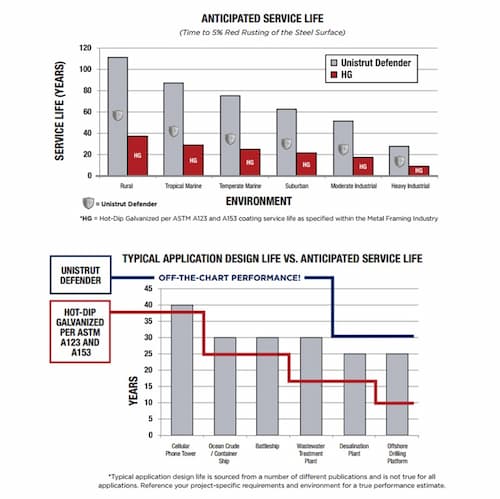
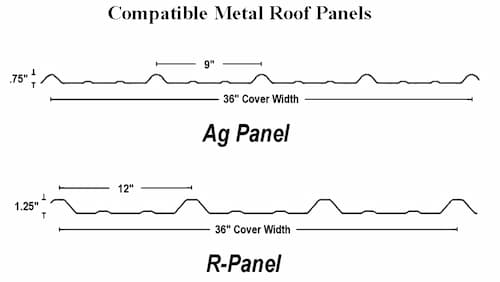
Included Parts List
- (4) RCT SataBrackets with Gaskets, 8 Metal Roof Screws, and 1 Stainless Top Bolt and Washer Each
- (4) ¼-20x1.5” 304 Stainless Steel Bolts
- (4) ¼” 304 Stainless Steel Flat Washers
- (4) Black Vinyl End Caps
- (2) 27” P1000T DF Unistrut with Defender finish
- (4) ¼-20 Defender Series Spring Channel Nuts
Installation Considerations
When installing the SataMount MRM, users can expect a hassle-free process thanks to its flexible design and comprehensive hardware kit. The universal-fit bracket ensures compatibility with a wide range of roofs and offers peace of mind to users seeking a reliable and weather-resistant mounting solution.
In addition to its durability and weather resistance, the SataMount MRM's versatility makes it an ideal choice for various applications beyond satellite mounting. Whether for residential or commercial use, this premium mounting solution delivers unparalleled strength and security, ensuring optimal performance in any environment. Choose SataMount MRM for a solution that transcends mere functionality.
Pole Mounts: Versatility and Elevation
Pole mounts provide versatility and elevation, allowing users to elevate the Starlink terminal above obstructions for better signal reception. Whether mounted on existing poles, masts, or custom-built structures, pole mounts offer flexibility in positioning and orientation. This option is ideal for users seeking to optimize signal strength in challenging environments.
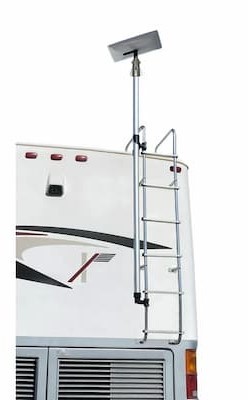
Special Considerations for Mounting
When choosing a mounting option for Starlink, several factors must be taken into account. Environmental conditions, such as terrain, weather, and vegetation, can impact signal quality and installation feasibility. Additionally, users must adhere to local regulations and zoning requirements to ensure compliance and avoid potential issues.
DIY vs. Professional Installation
While some users may opt for a DIY approach to install their Starlink setup, professional installation services offer several advantages. Experienced technicians can assess site suitability, optimize antenna placement, and ensure proper alignment for optimal performance. However, DIY installation may appeal to users with technical skills and a desire for hands-on involvement.
Maintenance and Adjustment
To maintain optimal performance, regular maintenance and adjustment of the Starlink setup are essential. This includes periodic inspection, cleaning, and alignment checks to mitigate potential issues and maximize uptime. Troubleshooting tips and adjustment guidelines are readily available to help users address common issues and optimize their installation.
Cost Considerations
The cost of installing and maintaining a Starlink setup varies depending on various factors, including the chosen mounting option, installation method, and ongoing maintenance requirements. While there may be an initial investment involved, the long-term savings and return on investment (ROI) from reliable internet access can outweigh the upfront costs.
Future Trends in Starlink Mounting
As Starlink continues to evolve and expand its network, future trends in mounting options are expected to emerge. Innovations in antenna design, installation techniques, and integration with other technologies may further enhance accessibility and usability. Predictions for the future of Starlink mounting include increased automation, streamlined installation processes, and enhanced reliability.
Conclusion
Choosing the right mounting option is essential for maximizing the performance and reliability of Starlink internet connectivity. Whether opting for ground mounts, roof mounts, or pole mounts, users must consider factors such as stability, accessibility, and regulatory compliance. By selecting the most suitable mounting solution and following best practices for installation and maintenance, users can enjoy seamless access to high-speed internet anywhere, anytime.
FAQs (Frequently Asked Questions)
1. What is the history behind Starlink and its satellite internet service?
Starlink, a revolutionary project by SpaceX, aims to provide global satellite internet coverage by deploying a constellation of low Earth orbit (LEO) satellites. This ambitious endeavor, spearheaded by Elon Musk, seeks to bridge the digital divide and revolutionize connectivity worldwide by offering high-speed, low-latency internet access to underserved and remote areas.
2. What are the primary benefits of Starlink's satellite internet service?
Starlink's satellite internet service offers several key benefits, including high-speed connectivity, low latency, and global coverage. By leveraging advanced satellite technology, Starlink empowers users with reliable internet access virtually anywhere on the planet, unlocking opportunities for education, business, and communication.
3. What types of satellite dishes are available for Starlink users?
Starlink offers a range of satellite dishes, or user terminals, designed to receive and transmit data with efficiency and reliability. These dishes, available in various configurations, are tailored to different installation environments, including rooftops, poles, and other structures, providing users with flexible options to establish high-speed internet connections.
4. How does the installation process for Starlink satellite dishes work?
The installation process for Starlink satellite dishes typically involves mounting the dish in a location with a clear line of sight to the sky and connecting it to a power source and Wi-Fi router. Detailed instructions and guidance are provided by Starlink to ensure proper installation and optimal performance.
5. What factors should I consider when choosing a mounting option for my Starlink satellite dish?
When selecting a mounting option for a Starlink satellite dish, factors such as stability, accessibility, and regulatory compliance should be taken into account. Considerations include the type of roof (standing seam, exposed fastener, shingle), environmental conditions, and local regulations governing installation.
6. Can I install a Starlink satellite dish myself, or do I need professional assistance?
While some users may opt for a DIY approach to install their Starlink setup, professional installation services offer expertise and assurance of proper setup. Experienced technicians can assess site suitability, optimize antenna placement, and ensure compliance with local regulations, maximizing the performance and reliability of the installation.
7. What are the maintenance requirements for Starlink satellite dishes?
Regular maintenance practices for Starlink satellite dishes include periodic inspection, cleaning, and alignment checks to ensure optimal performance. Troubleshooting tips and adjustment guidelines are also available to help users address common issues and optimize their installation for reliable internet connectivity.
8. How does Starlink handle extreme weather conditions, such as storms or heavy snowfall?
Starlink's satellite dishes are designed to withstand harsh weather conditions, including storms and heavy snowfall. The robust construction and durability of the equipment, coupled with advanced technology, ensure uninterrupted internet connectivity even in adverse weather scenarios.
9. Are there any data usage limits or restrictions with Starlink's satellite internet service?
Starlink does not impose data usage limits or restrictions on its satellite internet service. Users can enjoy unlimited data usage within their subscription plan, allowing for seamless access to online resources, streaming content, and communication platforms without worrying about data caps.
10. What future developments can we expect from Starlink and its satellite internet service?
As Starlink continues to expand its satellite constellation and refine its infrastructure, future developments may include enhanced coverage, improved performance, and expanded capabilities. Innovations in antenna design, installation techniques, and integration with other technologies are anticipated, further advancing the accessibility and reliability of satellite internet connectivity.

